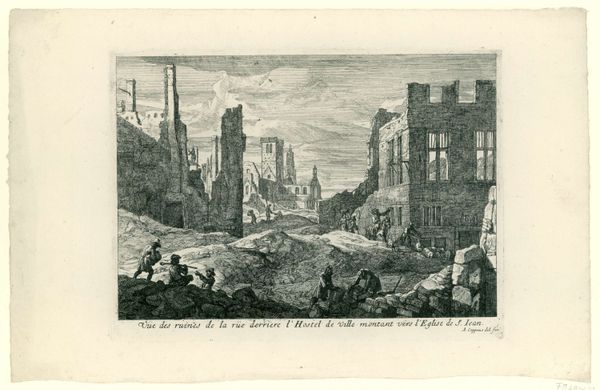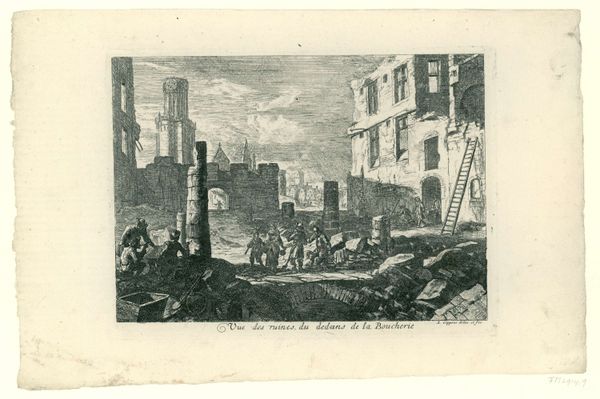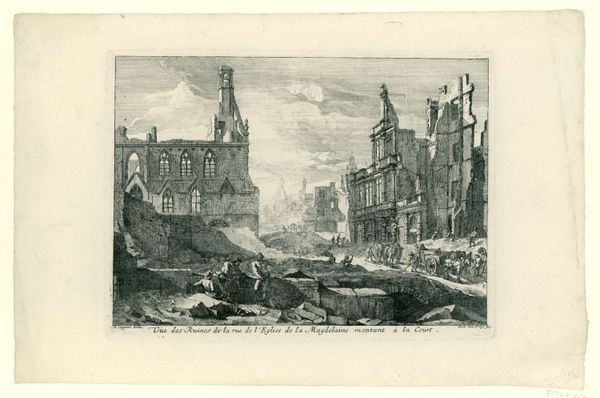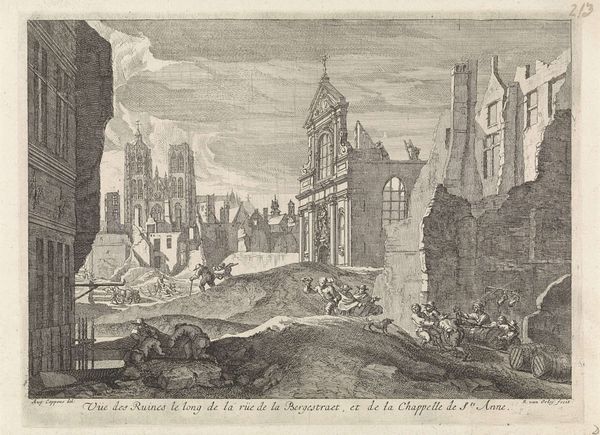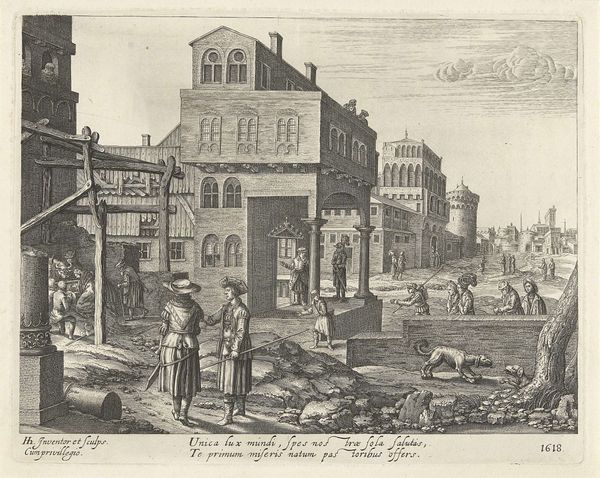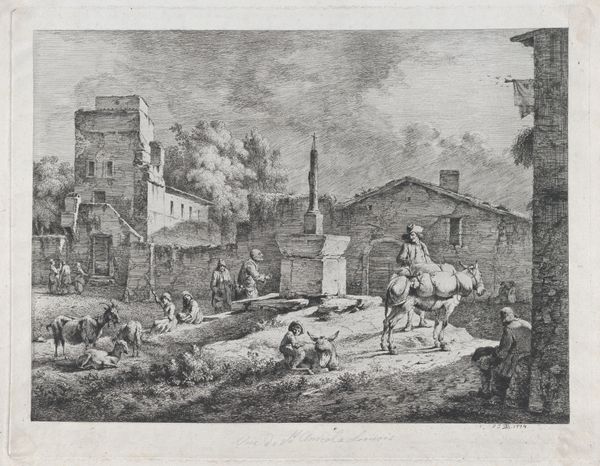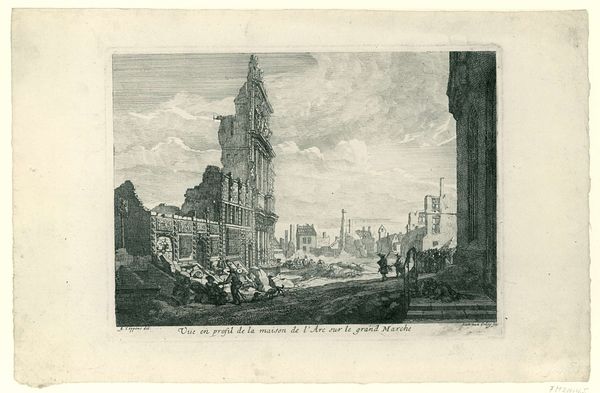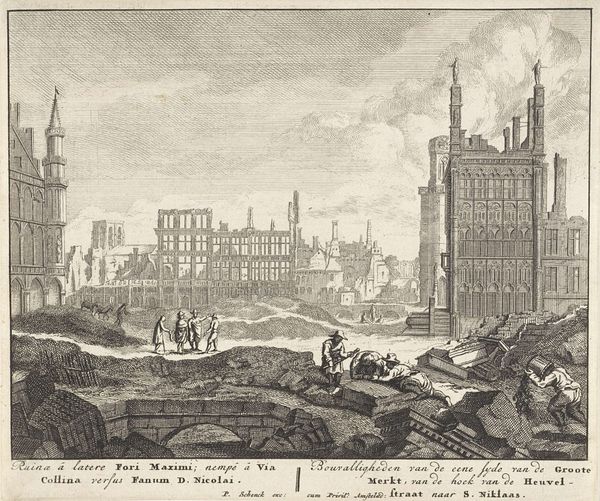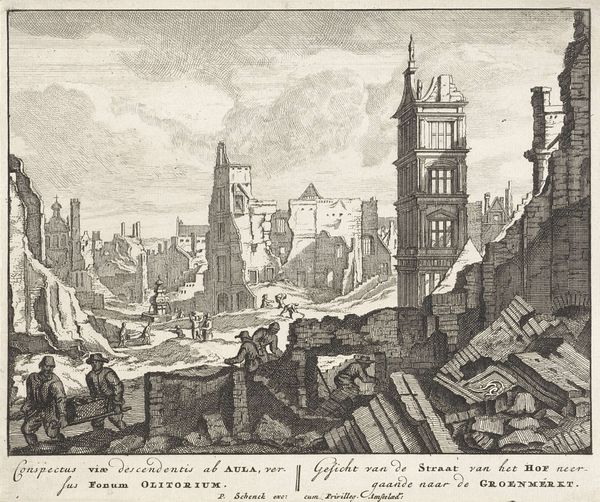
print, engraving
#
baroque
# print
#
old engraving style
#
landscape
#
line
#
cityscape
#
history-painting
#
engraving
#
realism
Dimensions: height 200 mm, width 232 mm
Copyright: Rijks Museum: Open Domain
Pieter Schenk created this print, "Ruins in Brussels, 1695," using engraving, an intaglio printmaking technique. Lines are incised into a metal plate, often copper, using a tool called a burin. The plate is then inked, and the surface wiped clean, leaving ink only in the incised lines. When paper is pressed against the plate, the image transfers. The fine lines in this print capture the devastation of the city after the bombardment by French troops. The medium itself, engraving, mirrors the destruction seen in the image. The sharp, precise cuts into the metal plate echo the violent impact on the city's architecture. Prints like this one were often produced in multiples, making images of historical events accessible to a wider audience. They served as a form of documentation and a way to spread information, highlighting the relationship between art, society, and the dissemination of news. In this context, even printmaking can be seen as a kind of labor.
Comments
No comments
Be the first to comment and join the conversation on the ultimate creative platform.
